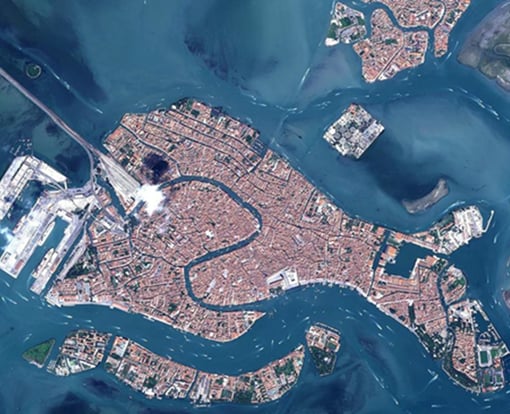Part two of our interview with Geospatial Insight's resident GeoFinance expert and development lead for RetailWatch - the only Satellite-based solution for monitoring of European out-of-town retail outlets.
How does your company differentiate itself from its competitors?
Imagery, satellite and aerial in particular, when compared with other alternative data sources is globally applicable and non-intrusive. You can count cars in a car park or at a factory, but you can’t identify individuals, unlike payroll information or transaction data. Second, in relation to other geospatial vendors, our experience in insurance is unique. While financial services were perhaps first off the block to use geospatial information, for example counting cars in Walmart parking lots a decade ago, insurance has adopted it much more since. It’s had to as policies are postcode and environment-dependent. Now that finance is picking up geospatial technology again, we’ve gained invaluable experience.
Where do you see the future of the market heading?
In five years time, you will be able to look up images, identify features and draw out structured time-series data on your favourite terminal platform. We want to be part of that mega-trend.
What do you feel are the biggest obstacles facing your organization in the industry?
The alternative data trend or fad represents both an opportunity and a hindrance. The industry is talking about it, learning to use it, but also there are too many vendors offering too many data-sets. As of now, satellite and imagery data-sets have not been top of the list of “altdata” shopping lists, in part because imagery has been perceived as largely static, low-frequency, overly irregular given issues like cloud and too often delivered as an image rather than a time-stamped data-set.
How do you plan to overcome those obstacles?
Some of this is the luck of timing. Technology is changing rapidly. Imagery is increasingly dynamic. Machine learning facilitates automated ongoing analysis. We’re getting better at understanding and structuring data in a way that the industry can ingest, and spatial information feeds are near-at-hand. As noted earlier, our insurance experiences have helped considerably. Also, financial organisations across the spectrum – from regulators to investment managers - are now building use cases, becoming more familiar with the technologies and willing to engage with them. These are truly exciting times to be at the intersection of imagery and financial analysis.
What makes your company an employer of choice?
The diversity of our client base helps. We’re committed to finance, but not dependent on the fads. Some aspects of our company too are fabulously ultra-modern, an ability to work remotely for example. We work hard and late into the night and over weekends, but flexibly.
What areas do you see as most ripe for disruption by technology?
Quant and financial modelling. The financial model is and will remain a staple, but in an age of big data, data science and massive computational power, assumptions and levels of abstraction need not be so constraining. Imagine a world where baskets of assets are priced according to spatial time-series parameters, or portfolio theory incorporates point-in-time information reflecting the global components of constituent assets. No longer will portfolio analysts depend on the rational efficient market blanket assumption that price captures all of that and more. Practically, there was no point in challenging the staple theories a decade ago because of computational limitations. Now, aging theory is gatekeeper, but that’s changing.




